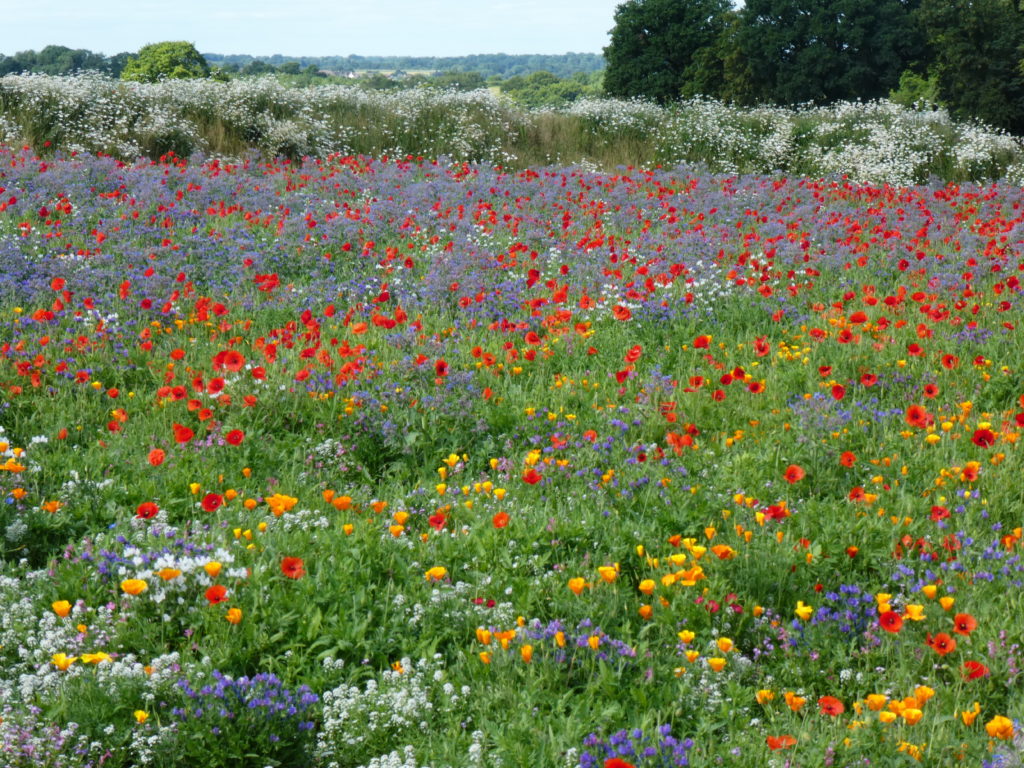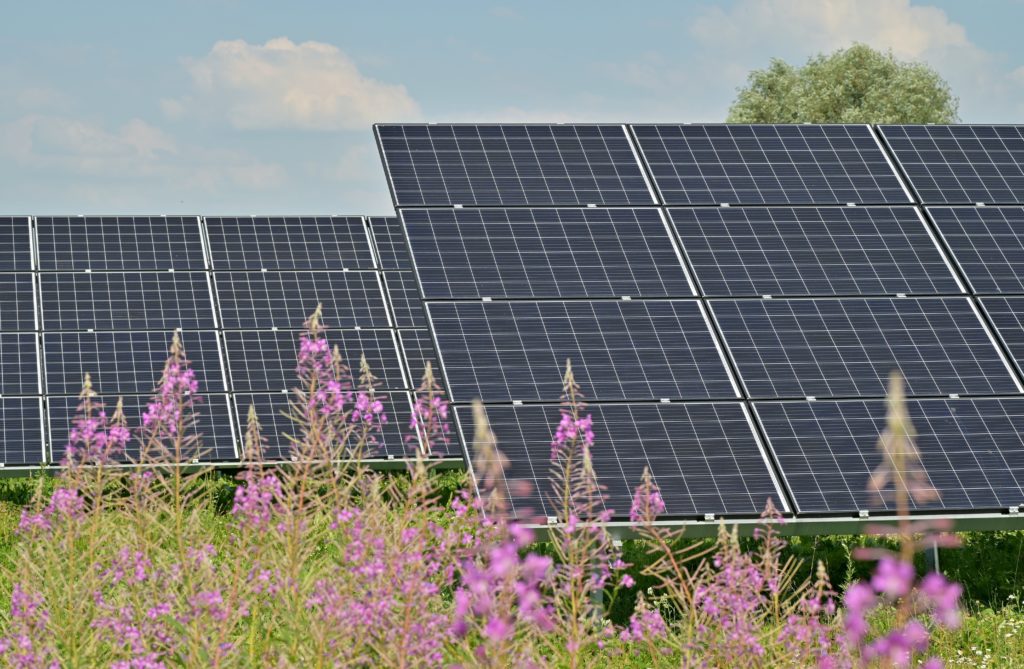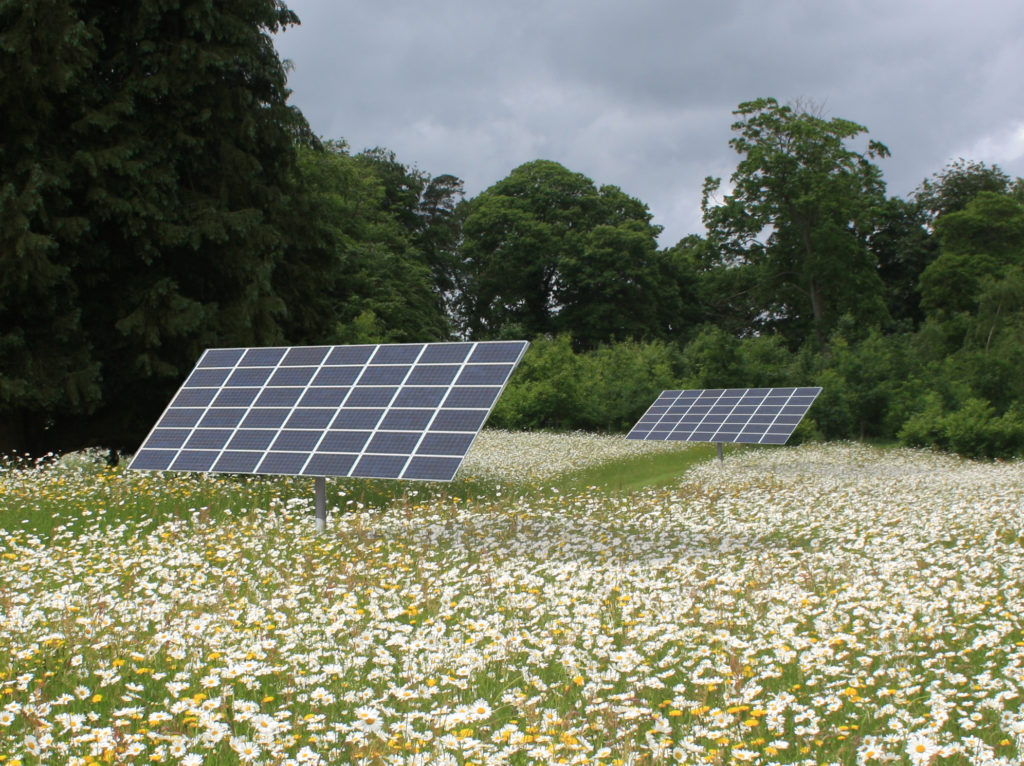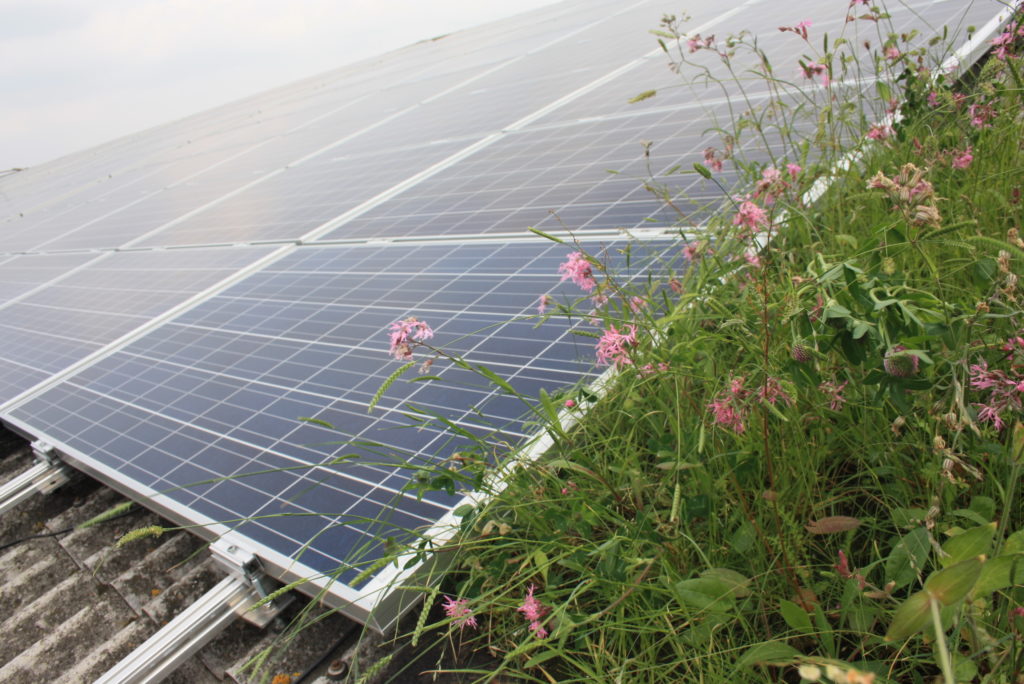As world leaders prepare to gather at COP27 amid a global energy crisis, climate change and renewables are sharply in focus. At the same time, increasing climate resilience across food systems will be needed to counter rising hunger and malnutrition, according to UN General Assembly President Abdulla Shahid.
Agrivoltaic farming could be a solution to not just one but both of these problems. This guest blog from Adrian Johansen covers how Agrivoltaic farms could also benefit the UK’s wildflower population. Adrian is a freelance writer who specialises in sustainability and climate change issues and can be found on Twitter
There are few things lovelier or more soothing to the human spirit than the sight of a meadow teeming with vibrant wildflowers. Today, however, as more land is being appropriated for urban development and as the ravages of climate change threaten those ecosystems that have as yet remained undeveloped, the sight of rolling hills painted every colour of the rainbow by prolific blooms is increasingly rare.

The good news, though, is that there is hope for preserving and even revitalising wildflower populations across the U.K. and around the world. Agrovoltaic farming, which refers to the use of solar panels in agriculture, is showing significant promise in restoring wildflower populations.
Agrovoltaic Farming and Production Increases
The introduction of solar panels into agriculture was initially motivated principally by the desire to mitigate the devastating impacts of traditional farming on the environment. Solar panels were intended to reduce energy consumption while better protecting crops from extreme weather events, such as storm damage and drought.
However, farmers and researchers have begun to identify a number of unexpected benefits to agrovoltaic farming, including substantial increases in crop yields. There is evidence, for example, that high-value crops such as berries, soft fruits, and hops fare as well, if not better, under the shade of solar panels, while at the same time benefit from the protection against inclement weather conditions that the panels provide.

The panels don’t just shield sensitive plants from the ravages of wind and rain, though. Agrovoltaic farming also protects crops from the harms of sun overexposure. Plants are limited in the amount of light they can use. Beyond this light saturation point, sensitive vegetation begins to scorch and “sweat,” requiring significant amounts of water to prevent them from withering.
In agrovoltaic farming, however, solar panels can be adjusted to ensure that plants receive the exact levels of sun exposure they need. The result is a healthier, more prolific yield, reduced water consumption, and increased energy production through solar.
Agrovoltaic Farming, Pollinator Plants, and Wildflowers
One of the most exciting aspects of agrovoltaic farming is its potential impact on wildflower populations. As it has been shown, plants tend to be healthier and more bountiful when grown under a solar panel ceiling. This is due in large part to the ability of producers to adjust the panels as needed to accommodate the plants’ specific needs and heat, light, and moisture tolerance.

The environmental adaptability inherent to agrovoltaic farming means that cultivators are no longer limited by external environmental conditions. They can, in essence, replicate an array of climates to enable a diversity of species to thrive much as they would in their native ecosystem. This includes the cultivation of a wide variety of “pollinator plant” species which seem to flourish under solar panel ceilings.
The cultivation of pollinator plants is directly linked to the biodiversity of a given environment which, in turn, supports wildflower populations. Because wildflowers depend heavily on myriad pollinator species, from birds to insects, increasing biodiversity through agrovoltaic farming may well reverse recent threats to wildflower populations.
Considerations and Challenges in Agrovoltaic Farming
Among the many advantages of agrovoltaic farming, one of the greatest is its accessibility. You don’t have to be the owner or operator of a large industrial farm to embrace agrovoltaic methods. Indeed, private homeowners and small-scale farmers can reap the benefits of agrovoltaic farming.
For instance, the installation of solar panels on your own private property enables you to create a space for cultivating your own agrovoltaic garden of wildflowers, fruits, or other crops.

At the same time, you will reduce your home’s carbon footprint and, consequently, cut your energy costs. If you connect your solar panels to your hot water heater, for instance, both your water and your electric utilities will become more energy efficient. You will, in other words, “green” two of your property’s utilities while also embracing farming methods that are both more productive and more environmentally friendly.
For all of these benefits, however, it’s important to take some preparatory steps before constructing your own agrovoltaic farm. For instance, common pests can threaten your property and your crop yields. You will want to call in a reputable pest control expert to assess the health of your lawn, soil, and on-site buildings to ensure that all are sound and pest-free. Your pest control specialist can also treat any nuisance species and apply preventative treatments that are safe and environmentally friendly.
The Takeaway
Our environment is in crisis. The effects of climate change are exacting a devastating toll on ecosystems the world over. This is evident not only in rising global temperatures and rising rates of extreme weather events, but also in the increasing threat that wildflowers populations are now facing. The good news, however, is that agrovoltaic farming offers immense promise in mitigating the environmental impacts of farming, supporting higher and more diverse crop yields, and nurturing wildflower populations, principally through the cultivation of pollinator plant species.